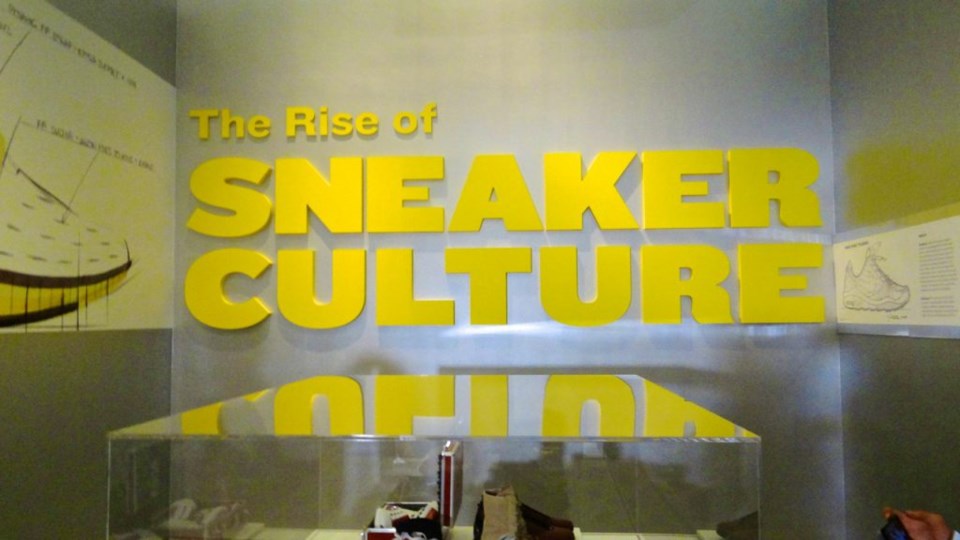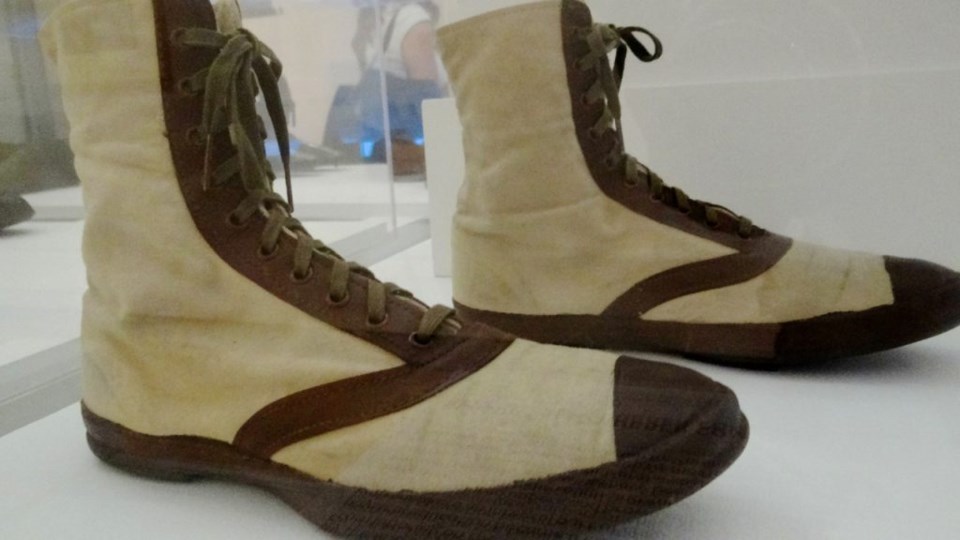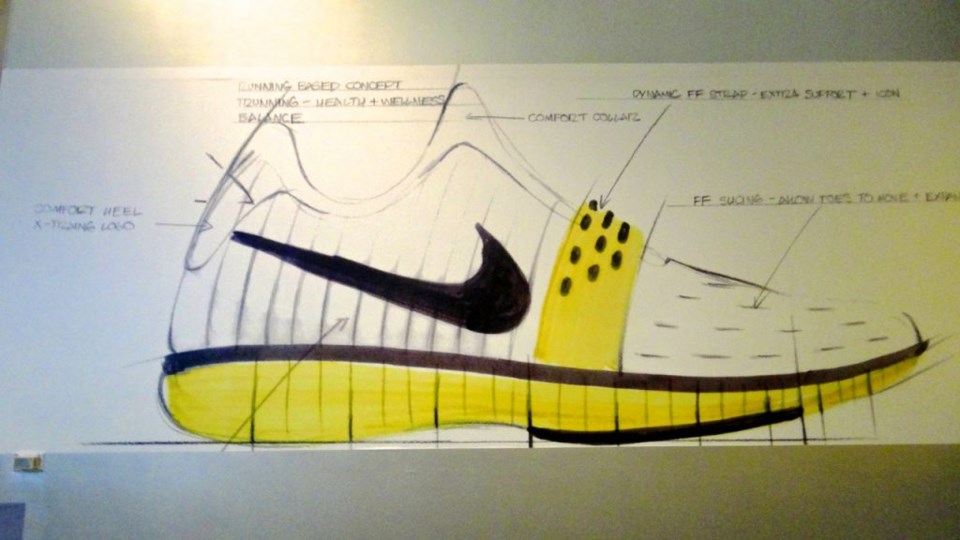
In the hierarchy of the shoes in your closet, where would you place your sneakers? For most Americans, that answer would be, more often than not, high. Very high.
Disagree? Ask anyone living outside of the United States how they most easily identify an American tourist; it's by their unequivocal choice of sneakers as their walking shoe.
In fact, according to shoe historian and Senior Curator at the Bata Shoe Museum Elizabeth Semmelhack, sneakers are such a ubiquitous part of the average American's wardrobe that they've become a cultural phenomenon. In the exhibit, The Rise of Sneaker Culture, on view now at the Brooklyn Museum, Semmelhack—who is also the exhibition's curator-- posits that America's own sneaker culture is responsible for what has become a global phenomenon.

"The sneaker is such an important and essential part of male attire today," said Semmelhack, "so much so, the fashions that have come out of New York City have influenced footwear globally. All of the essential sneakers worn around the world have come out of the United States."
The Rise of Sneaker Culture includes around 150 pairs of mid-nineteenth century to high-end sneakers culled from collections at the Bata Shoe Museum, Kosow Sneaker Museum and Northampton Museums and Art Gallery, featuring the more well-known brands—Nike, Converse, Adidas—as well as private collectors such as hip hop legend Darryl "DMC McDaniels, Bobbito Garcia and Dee Wells of Obsessive Sneaker Disorder.
Semmelhack said she had been working for a long time on the history of footwear as a museum curator, and people assumed that she was curating for a museum focused on women.
"And I thought, How interesting, given that gender in our culture is not expressed through men being bare-footed," she said. "In fact there are many men who are obsessed with their sneakers just as much [as women are with high heels]. So I decided to turn my lens and look at sneaker culture and also look at what I consider to be evidence of profound shifts in masculinity throughout sneaker culture."

In 2010, Semmelhack began working on a sneaker culture exhibition that debuted at the Bata Shoe Museum in Toronto and has since toured North America. At the Brooklyn Museum, the exhibit is organized into six sections across a timeline of the shoe's evolution, from its origins as functional footwear, to a specialized sports shoe to the "high-tech" innovation spurred by Nike's attempt at brand distinction in the early 80s, to becoming an all-out fashion statement.
Interestingly, the sneaker's evolution from beginning to now seems to have come almost full circle, as the very first sneakers aesthetically do not look dissimilar to today's Converse style shoe or a high-end running shoe.
In addition to the shoe displays, there are design drawings that examine the technical innovations, film footage and photos. The exhibit concludes with a section about sneaker design and innovation, featuring a selection of Tinker Hatfield designs and shoes, Eric Avar's Nike Foamposite, Paul Litchfield's Reebok Pump and GE X Android Homme's Missions moon boots.
The exhibition is accompanied by a fully illustrated catalogue and includes an introduction by Bobbito Garcia, an essay by Semmelhack and interviews between Dee Wells and Nike designers Tinker Hatfield and Eric Avar, among others.
"What's interesting is that history of footwear would suggest that shoes were invented solely to ease mobility and help move you forward comfortably," said Semmelhack. "But the rise of sneaker culture is a part of an expressive nature of dress that's not just about mobility— it's about cultural context, expressing brand identity, status, individuality.
"I think what it's done is allow for a more diverse expression of male success," said Semmelhack.
"I think that it has allowed men to express greater individuality through fashion. Whether a computer geek, the suited business man, the rap star or the elite athlete, sneakers are found on the feet of them all."
The Rise of Sneaker Culture opened at the Brooklyn Museum on July 10, 2015, and continues on view through October 4, 2015, before traveling on to three more museums.



.png;w=120;h=80;mode=crop)
